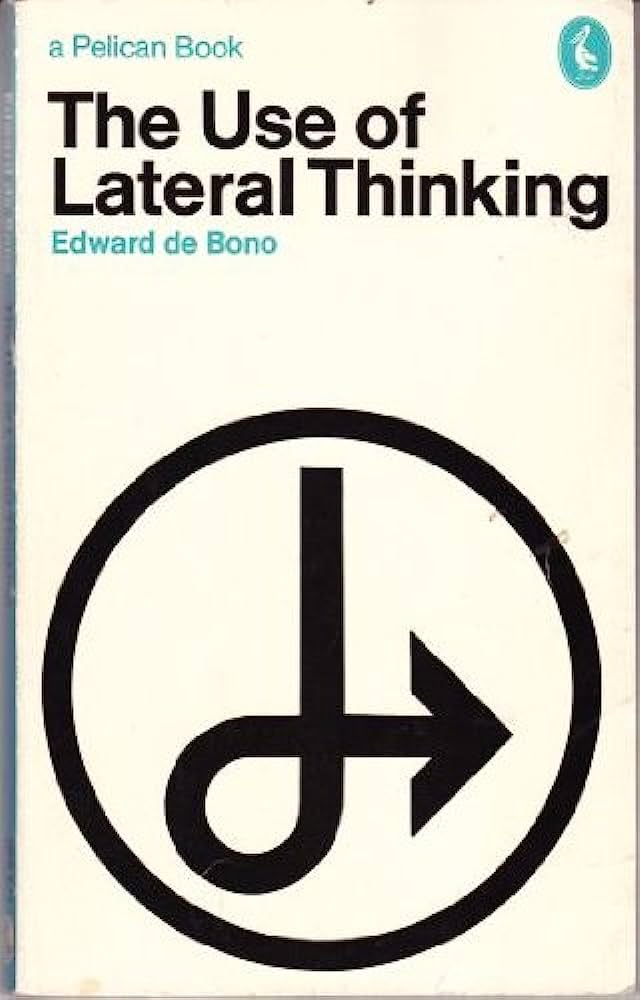
I stumbled across this book through some mention in a social media post. The topic seemed pretty interesting and the book could be found online for just a few dollars, so I purchased it. The author, Edward de Bono, passed away just a couple of years ago. His credentials were quite impressive. He was a Rhodes scholar and earned a medical degree from Trinity College, Cambridge. He has written several books on what he calls, “Lateral thinking.” This is a method of coming up with new ways of looking at things and creating new ideas. The author refers to conventional thinking as “Vertical thinking.” Conventional, or vertical thinking uses established ideas and paradigms to draw conclusions and formulate solutions to problems. This is how most of the world currently solves problems and creates new ideas. The author suggests that this method often delivers solutions, but maybe not the best ones and it will rarely develop ground-breaking ideas.
Lateral thinking proposes looking at things from different perspectives, much in the way a comedian points out a bizarre quirk in human behavior that we all accept as commonplace. When presented with a problem, we often rely on a reference point, with proven data, for a solution. Oftentimes, this reliance obscures what may be the best idea. The best example of lateral thinking comes directly from the first chapter of the book. It describes a gentleman and his beautiful young daughter. The gentleman is deeply in debt to a creepy, foul, deceitful, evil man. The man is in debt to a level that he may never be able to pay it off. He is also in arrears and can be sent to jail for not paying. The creepy, foul, deceitful man has taken a liking to his debtor’s daughter and proposes an opportunity. He says that he will wipe out all debt if the daughter agrees to marry him. The gentleman declines as he has no desire to impose his woes on his daughter, so the creepy, foul, deceitful man proposes something else. They are all standing on a path of small black and white pebbles. The opportunity is presented as follows: they will put one black and one white pebble in a sack and the daughter will draw out one of the pebbles. If the pebble is white the debt is cleared, and the daughter does not need to marry. If the pebble is black, then the debt is also cleared, but the daughter must marry the creepy, foul, deceitful man. The man has the option of taking his chances on what should be a 50-50 game of chance, or he can go to jail. Having no real choice, the man agrees to the game. The daughter recognizes that when the creepy, foul, deceitful man picks up two pebbles and puts them in the bag, both pebbles are black. If the daughter mentions the deceit, the father will go to jail as the game will not be played. What should she do?
She appears to be in an impossible spot. This is where lateral thinking comes in. Most conventional ways of thinking will not provide a solution, but the daughter is very clever. She reaches into the sack, grabs a pebble, and without looking at it, allows it to fall on the pebble path. She then says, “oh, silly me, I dropped the pebble, but it does not matter, whatever I have chosen must be the opposite color of whatever remains in the bag.” A black pebble remains in the bag with the implication that she withdrew a white pebble. This would mean the debt is cleared and she does not need to marry the creepy, deceitful, foul man. The creepy, deceitful, foul man can’t reveal his deceit and must accept the outcome.
Lateral thinking also likes to employ chance to come up with new ideas. If someone is constantly observing the world, there is an opportunity to observe something that may be applicable to a problem. It may not happen quickly, but if someone is always observing things and noting anything that may be interesting at the moment, but has no current application, he or she should make an effort to remember it. Perhaps make a note of it. These observations may provide a solution to a seemingly unsolvable problem in the future. Many new ideas are the result of recognizing how two seemingly unrelated things may create something entirely new and useful when combined.
This book was a pretty easy read at only 150 pages. It is well worth the time to explore this book. Perhaps it will unlock something amazing for you.

